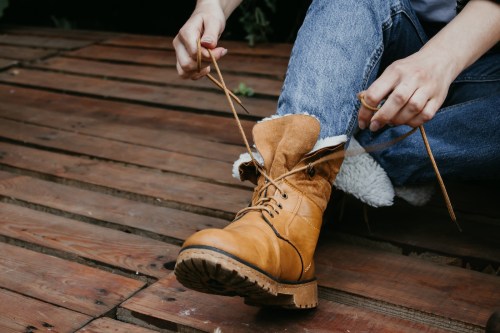I’m a Podiatrist, and Here’s How to Get Rid of Dry, Cracked Heels in the Winter
Cracked heels can actually be worse in the winter, because of the cold, dry air. Here's how to prevent and get rid of cracked heels.

Even though I spend a lot of time on my feet—walking from my couch to my fridge; pacing around my apartment while reliving moments from failed relationships in minute detail; etc.—I don’t really do anything to take care of them. That’s probably because feet, in general, kind of gross me out (this likely stems from a childhood in Oregon where I saw a lot of toes in Tevas). But foot care is definitely something we should all add to our to-do lists, especially now that low temperatures and dry air can cause cracked heels.
Experts in This Article
podiatrist and member of the Vionic Innovation Lab
If you’re like: “Well, who cares what my feet look like because I’m isolated in my apartment with only my dog and the memories of human touch for the foreseeable future,” please note that it’s not just about aesthetics. “If cracking becomes deep past the superficial epidermal layer and into the deeper dermal layers, it can be very dangerous and painful. Bleeding and infection could occur,” says Jacqueline Sutera, DPM, a podiatrist and Vionic Innovation Lab member.
Cracked heels are common, and can occur for a variety of reasons including hormonal changes, skin conditions like eczema and psoriasis, the weather, and a buildup of calluses. If your heels are cracked and flaky, there are several things you can do at home. Dr. Sutera recommends using a cream that’s formulated specifically for feet, like products by AmLactin and Kerasal. “These have gentle but effective acids which help to exfoliate, break down the callouses a little at a time, and moisturize at the same time,” she says. She also recommends using a foot file, battery-operated foot file like Amope ($50), or stone once a week to gently file your feet in one direction—not back and forth, which can make your cracks worse. “Remember less is more. It is possible to go too deep, down to dermal layers of skin which can cause infection, pain, increased cracking and scaring,” she says. Applying a balm, like Cannuka CBD Skin Balm ($58) as the final step will help moisturize and seal the moisturizer in.
This Parisian Skincare Brand Is Launching in the United States for the First Time—Here’s What a Derm Wants You to Know

We’re Calling It: Cleansing Balms Are the Face Wash of the Future—Here Are 3 to Add to Your Cart

This Is the One Product That Scarlett Johansson Always Keeps in Her Purse and on Her Bedside Table

“There is no permanent ‘cure’ for cracks, Dr. Sutera says. “Once feet are treated, maintenance is necessary.” She says you should keep up the weekly filing and daily moisturizing and exfoliation to keep the cracks from coming back. And in addition, be sure to clean your foot file after every use, dry it thoroughly, and replace it every two-to-three months. Also, don’t keep it in the shower or share it with anyone else, which again isn’t super challenging in the thick of a global pandemic.
There are some instances where you should go to a podiatrist for your cracked heels, like if they aren’t getting better, start getting worse, or are bleeding, suggests Dr. Sutera. “Patients with poor circulation, diabetes, or any other skin condition should not treat cracked skin themselves or have it cared for by a pedicurist,” she says. “These patients are safer seen by a podiatrist.”
Oh hi! You look like someone who loves free workouts, discounts for cult-fave wellness brands, and exclusive Well+Good content. Sign up for Well+, our online community of wellness insiders, and unlock your rewards instantly.
Sign Up for Our Daily Newsletter
Get all the latest in wellness, trends, food, fitness, beauty, and more delivered right to your inbox.
Got it, you've been added to our email list.







